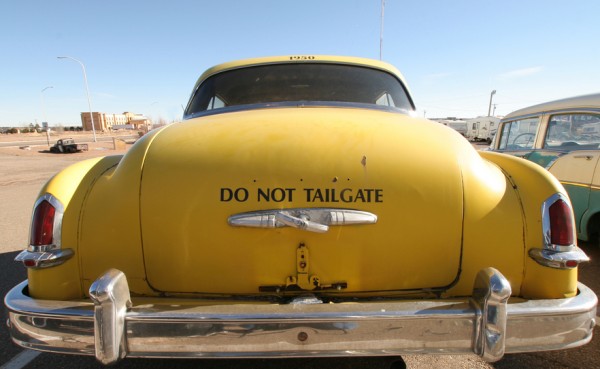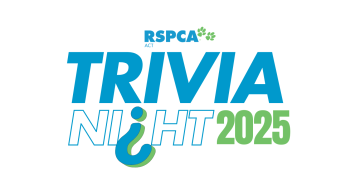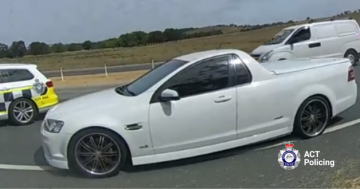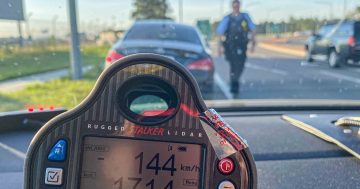
How does tailgating make you feel? Does it make you want to speed up over the limit to allow the impatient person behind you reach their destination faster, or to slow down, to try to send them the message that sitting on your tail like that is just not on?
It happens to me so often, I’ve thought about making a sign I can wave out the window at them to say back off. The stencil on the car above might not be a bad idea. A rear dashcam is another thing I’ve wondered about. I drive at the speed limit, so there is no cause for their frustration, just my fear in the face of it.
Once, a driver in a green ute followed me all the way home, with a furious look on his face. I was too scared to stop the car so pretended I’d made a wrong turn and kept driving in and out of loop streets in our suburb until he eventually gave up. Being nervous about parking at home in case he came looking for the house with our car out front, I rang the police for assistance. My children were very shaken by the whole experience and are not keen on green utes as a result of it.
These days, I indicate and pull over to allow them to overtake. It seems a much safer option than riding it out at the speed limit or slowing down and antagonising them further.
This month, ACT Policing officers are going to be on the lookout for tailgating offenders.
Tailgating drivers face a $340 Traffic Infringement Notice fine and loss of one demerit point for driving behind another vehicle too closely to stop safely.
The obvious downsides of tailgating are that the driver won’t have enough time to brake and avoid a collision if needed, but also the increased feeling of intimidation and distraction caused to the driver in front.
Acting Officer in Charge of Traffic Operations Ken Hedges has asked that all drivers observe the two second rule and travel at least 3 seconds behind the vehicle in front.
“This distance should of course be increased when driving in low light or at night and especially when it is raining,” he says.





















